Our previous post showed that the 2005 Bankruptcy Abuse Prevention and Consumer Protection Act (BAPCPA) was associated with a sizable rise in foreclosure, in addition to a decline in bankruptcy filings and a rise in insolvency. In this post, we examine one possible explanation for the rise in foreclosure: the substitution hypothesis. Prior to the 2005 reform, individuals facing insolvency could discharge their unsecured debt via bankruptcy, thus retaining the ability to remain current on their home debts. After the reform, since bankruptcy became too expensive for many, default on home loans was the most effective way for these individuals to reduce outstanding debt. The idea that BAPCPA caused a shift from bankruptcy to foreclosure is not new; see Morgan et al. (2012) and Li, White, and Zhu (2011). In this post, we use the Federal Reserve Bank of New York’s Consumer Credit Panel (based on Equifax data, described here) to provide evidence on the mechanism through which this substitution occurred, and to precisely quantify the magnitude of its impact on foreclosures.
Transitions into Foreclosure
We estimate the frequency transition probabilities of individuals across different credit states over time. In the chart below, we first show the four-quarter-ahead transition probabilities from Delinquent (any account up to 90 days late) with no foreclosure to states with foreclosure, specifically Insolvent (at least one account 120 or more days late or charged off) with foreclosure. We restrict attention to homeowners, who in our sample correspond to the individuals who display any type of real estate debt in the last four quarters. We report estimated transitions for the overall population of homeowners (the solid blue line) and those in the bottom quintile of the credit score distribution four quarters prior (the red dashed line). The vertical line indicates the effective date of the BAPCPA in the third quarter of 2005, while the gray bars denote NBER recession dates. The chart shows a sharp rise in the transition into Insolvent with foreclosure. The rise in the transition probability to this state is more pronounced for the bottom quintile of the credit score distribution.
Insolvency, Bankruptcy, and Foreclosure
To better understand the relationship between insolvency, bankruptcy, and foreclosure, we adopt an event-study approach. If the substitution hypothesis is valid, then for individuals who enter a spell of financial distress we should see lower bankruptcy rates, higher foreclosure rates, and higher rates of delinquency on home loans after the reform, relative to before.
We first study the behavior of individuals who become newly insolvent in a given quarter after two years of no insolvency, and examine their behavior for sixteen quarters around their initial insolvency. We consider their bankruptcy and foreclosure rates at various horizons before and after their new insolvency. As can be seen from the charts below, starting at the quarter of implementation of the reform, these individuals display an overall decline in bankruptcy filings at all horizons after insolvency, and a rise in foreclosure rates.
We now consider bankrupt individuals. After the reform, we should see that for this group, there is a higher foreclosure rate prior to bankruptcy and a lower foreclosure rate after bankruptcy, as well as a rise in insolvent home balances prior to bankruptcy. In each quarter of our sample, we consider individuals who file for bankruptcy in a given quarter, and track them for sixteen quarters around that date. The following chart displays their foreclosure rate at various horizons before and after bankruptcy. The foreclosure rate at t-quarters from bankruptcy is normalized by the foreclosure rate at bankruptcy. We can see that foreclosure rates do not rise after bankruptcy post-reform, whereas pre-reform, foreclosure rates rise both before and after bankruptcy.
Cross-District Variation
In our previous post, we documented the large variation in bankruptcy filing costs associated with the reform across judicial districts. We also showed that the reform had bigger effects on bankruptcy filings and insolvency in those districts with the largest cost increases. We now exploit the cross-district variation in filing cost changes to shed light on the impact of the bankruptcy reform on bankruptcy and foreclosure.
We estimate a simple difference-in-difference regression model, where the percentage cost change interacted with a post-reform dummy is the main explanatory variable. We also include time-varying district-level economic controls, such as personal income, the unemployment rate, and an index of house prices, together with a number of state- and district-level judicial and regulatory controls.
We find a very large effect of the filing cost change on both the bankruptcy rate and the foreclosure rate. The median percentage increase in filing cost lowers the bankruptcy rate by 22 percent. Moving from the 10th to the 90th percentile of the cost change distribution increases the size of the drop in the bankruptcy rate by 33 percentage points. The median percentage rise in the filing cost increases the foreclosure rate by 20 percent. Moving from the 10th to the 90th percentile of the cost change distribution increases the rise in the foreclosure rate by 29 percentage points. The advantage of this approach is that it allows us to clean out the effect of varying economic conditions on the bankruptcy and foreclosure rates. And, indeed, economic correlates do have an impact on both bankruptcy filings and foreclosures.
Conclusions
The evidence presented suggests that one consequence of the 2005 bankruptcy reform is that individuals who would have filed for bankruptcy prior to the reform instead substitute into foreclosure. This change in behavior is amplified for those at the bottom of the credit score distribution, who were more affected by the rise in bankruptcy filing costs associated with the reform. Given that the reform was implemented in the third quarter of 2005, it may, through the channels we’ve described, have amplified the housing and foreclosure crisis, especially for low credit score borrowers.
Disclaimer
The views expressed in this post are those of the authors and do not necessarily reflect the position of the Federal Reserve Bank of New York or the Federal Reserve System. Any errors or omissions are the responsibility of the authors.
Stefania Albanesi is an officer in the Federal Reserve Bank of New York’s Research and Statistics Group.
Jaromir Nosal is an assistant professor in the Economics Department at Columbia University.
Zachary Bleemer is a senior research analyst in the Federal Reserve Bank of New York’s Research and Statistics Group.
Matthew Ploenzke is a research associate in the Group.










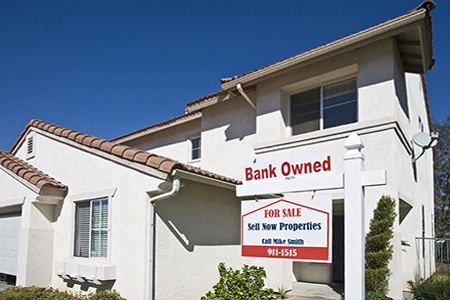
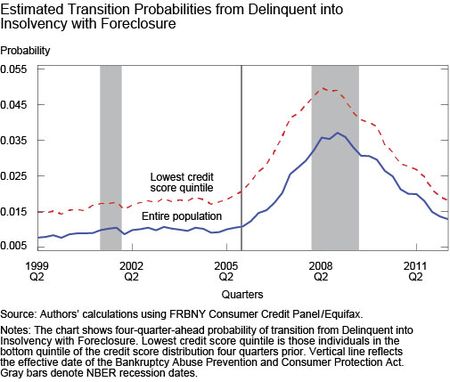
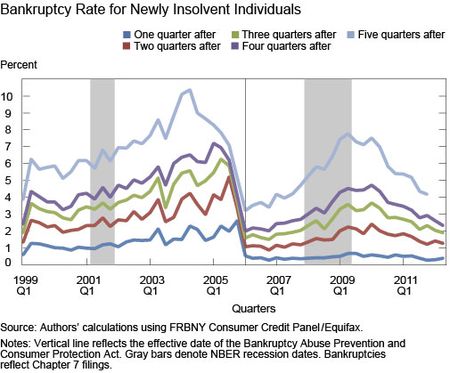
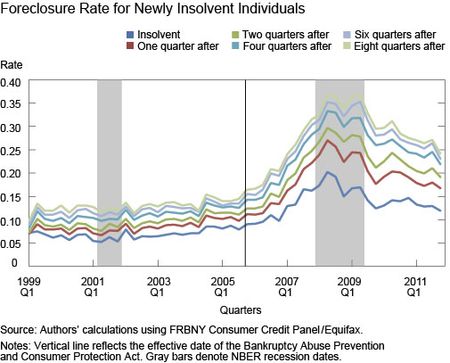
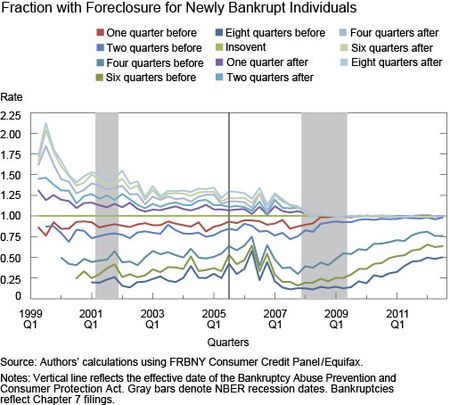



 RSS Feed
RSS Feed Follow Liberty Street Economics
Follow Liberty Street Economics
Last week Liberty Street did a series of blogs on student debt identifying the impact of this debt on the broader economy. Since student debt is the second largest form of consumer debt after mortgages and has always been very difficult to discharge, it would be interesting to quantify the relationship, impact, and prevalence of student debt on insolvency and the transition to foreclosures.